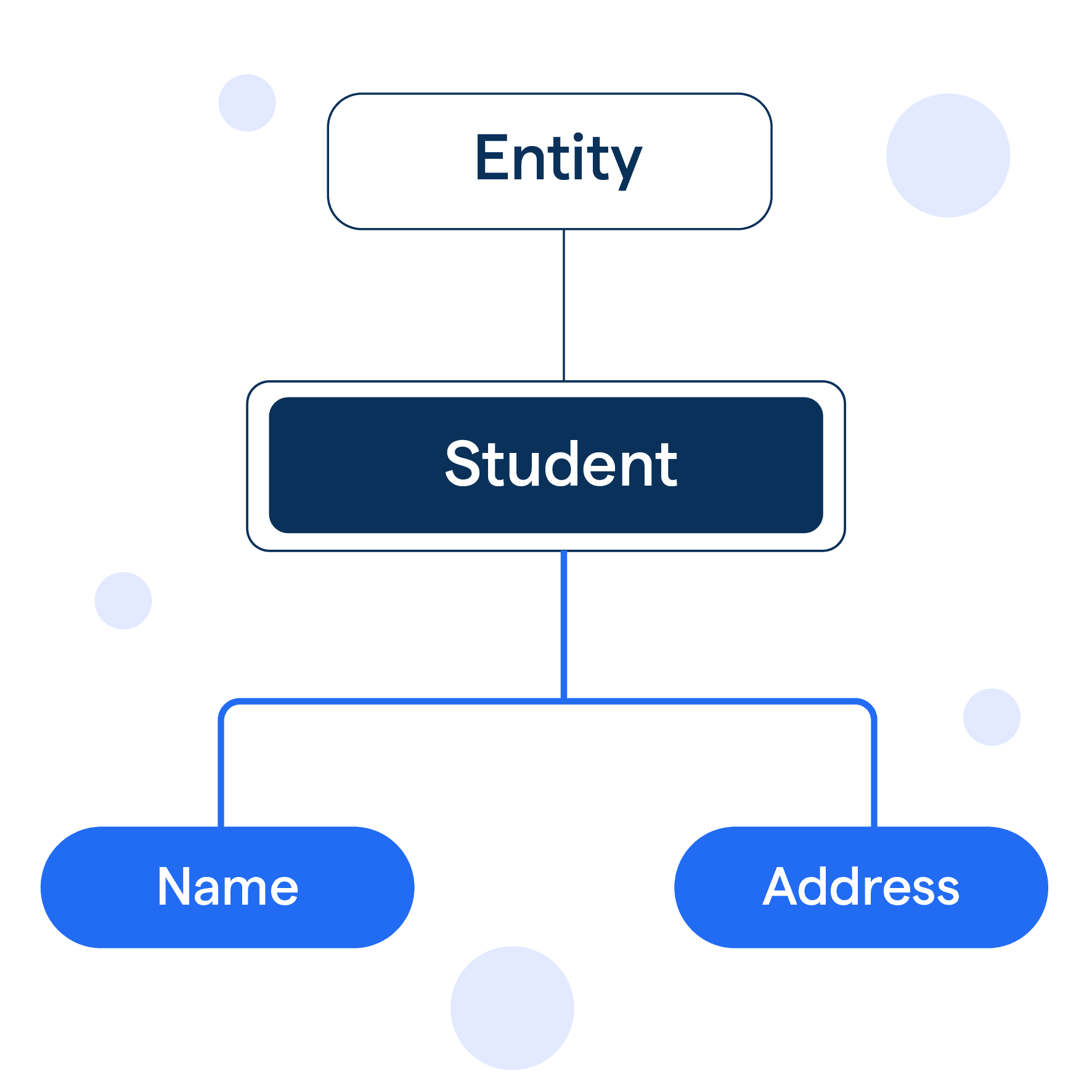What is an Entity?
An entity, in the context of databases and SQL, refers to a distinct object, concept, or thing that we want to model and store information about.
It can represent a real-world entity, such as a person or a product, or an abstract concept, such as an order or a transaction.
Entities are the building blocks of a database and are represented by tables in SQL.
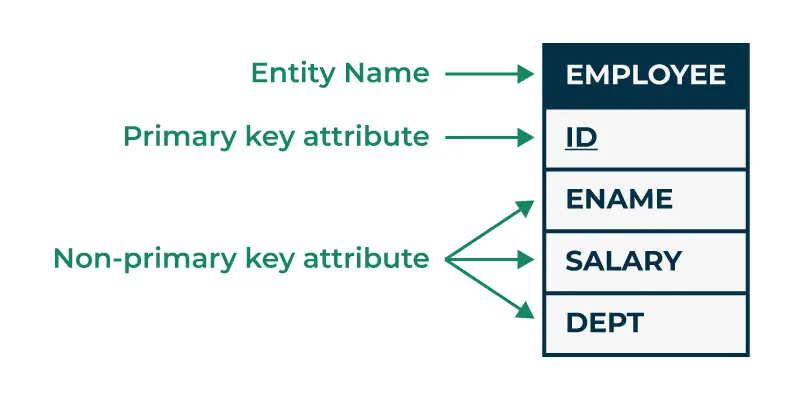
Entity Types
Entities can be categorized into different types based on their nature and characteristics. Some common entity types include:
- Strong Entities: Strong entities exist independently and have their own unique identity. They can be represented by tables in a database.
- Weak Entities: Weak entities depend on strong entities for their existence. They don't have a unique identity on their own and require a foreign key from a related strong entity.
- Associative Entities: Associative entities are used to represent relationships between other entities. They contain attributes that are specific to the relationship itself.
What are Entity Relationships?
Entity relationships define the associations and connections between entities in a database.
They represent the way entities interact or relate to each other, capturing real-world associations that need to be modeled.
Relationships are vital for establishing the structure and integrity of a database.
Types of Entity Relationships
There are different types of entity relationships such as

One-to-One Relationship
In a one-to-one relationship, an entity from one table is related to at most one entity in another table, and vice versa.
This relationship is often used to break down large tables into smaller, more manageable pieces.
One-to-Many Relationship
A one-to-many relationship occurs when an entity from one table can be associated with multiple entities in another table.
However, entities in the second table can only be associated with a single entity in the first table. It is the most common type of relationship in databases.
Many-to-Many Relationship
In a many-to-many relationship, entities from both tables can have multiple associations with each other.
This relationship requires the use of an intermediary table, also known as a junction or associative table, to represent the connections between entities.
What are Entity Attributes?
Attributes are the characteristics or properties of an entity that provide details and information about it.
They define the specific data elements that can be stored for each entity. Attributes help describe the entity's various aspects and are used to organize and retrieve data from the database.
Types of Entity Attributes
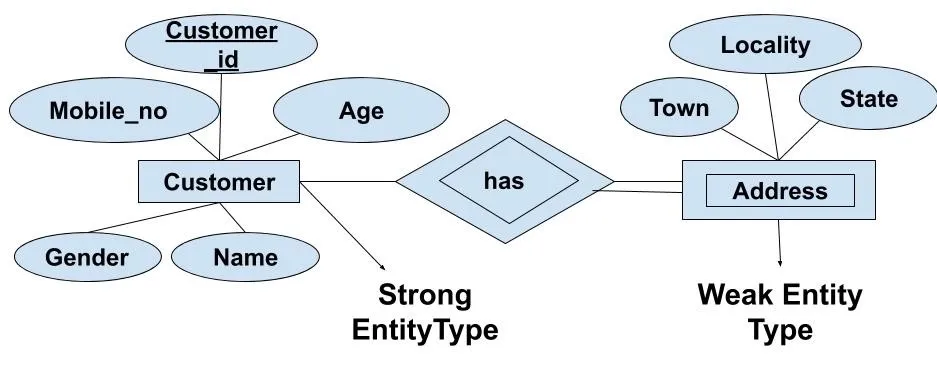
There are different types of entity Attributes to analyse such as
Simple Attributes
Simple attributes are single-valued attributes that cannot be divided further.
They represent basic properties of an entity, such as name, age, or date of birth.
Composite Attributes
Composite attributes are attributes that can be further divided into smaller sub-attributes.
For example, an address attribute can be divided into sub-attributes like street, city, state, and postal code.
Multivalued Attributes
Multivalued attributes can have multiple values for a single entity occurrence.
For instance, a person entity may have multiple phone numbers or email addresses associated with it.
Derived Attributes
Derived attributes are calculated or derived based on other attributes or values within the entity.
They are not stored directly but can be computed when needed. An example could be the age of a person derived from their date of birth.
Key Attributes
Key attributes uniquely identify each entity occurrence within a table. They are used to ensure the uniqueness and integrity of the entity.
Primary keys and foreign keys are examples of key attributes.
What is Entity Integrity?

Entity integrity refers to the assurance that each entity instance within a table has a unique and non-null primary key value.
It ensures that the primary key attribute of an entity is not null or empty, and that it uniquely identifies each entity in the table.
Importance of Entity Integrity
Entity integrity is crucial for maintaining data consistency and accuracy within a database.
It ensures that each entity has a well-defined identity and prevents duplicate or ambiguous entries.
By enforcing entity integrity, we can establish reliable relationships between entities and maintain data quality.
What is Entity Normalization?

Entity normalization is a process in database design that ensures data integrity, minimizes redundancy, and reduces anomalies.
It involves organizing entities, attributes, and relationships in a database to eliminate data duplication and dependency issues.
Normalization follows a set of rules called normal forms to ensure the database is structured efficiently.
Benefits of Entity Normalization
Entity normalization offers several benefits, including
- Improved data integrity and accuracy.
- Reduced data redundancy and storage space requirements.
- Enhanced query and retrieval performance.
- Simplified database maintenance and updates.
- Avoidance of update anomalies.
Normal Forms

Normal forms provide guidelines for structuring entities and their attributes to achieve the goals of entity normalization. Some commonly used normal forms include:
- First Normal Form (1NF)
- Second Normal Form (2NF)
- Third Normal Form (3NF)
- Boyce-Codd Normal Form (BCNF)
Entity Querying and Manipulation
Querying entities involves retrieving specific data from the database based on defined criteria.
SQL provides powerful querying capabilities to filter, sort, and aggregate entity data using SELECT statements. By using conditions, joins, and functions, you can retrieve the desired information from one or multiple entities.
Entity Manipulation Operations
Entity manipulation operations allow you to modify entity data in a database. The main operations include
Inserting Entities
INSERT statements are used to add new entity instances or records into a database table. You specify the entity attributes and their corresponding values to be inserted.
Updating Entities
UPDATE statements enable you to modify the values of existing entity attributes in a database table. You can update specific attributes based on certain conditions or update all attributes in a table.
Deleting Entities
DELETE statements allow you to remove entity instances or records from a database table. You can specify conditions to delete specific entities or delete all entities in a table.
What are Entity Constraints?
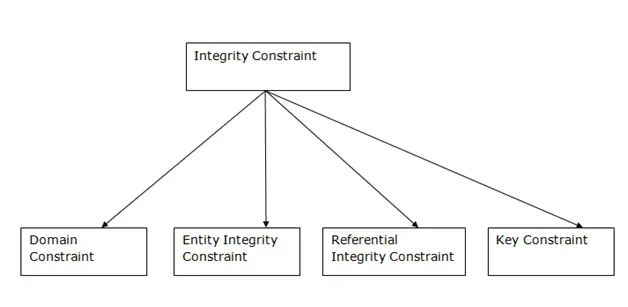
Entity constraints define rules and restrictions on entity attributes to maintain data integrity and enforce business rules within a database.
Constraints ensure that entity data adheres to predefined conditions and prevent the insertion of invalid or inconsistent data.
Types of Entity Constraints
There are several types of entity constraints commonly used in SQL databases:
Primary Key Constraint
A primary key constraint ensures that each entity instance in a table is uniquely identified. It prevents duplicate or null values in the primary key attribute(s).
Foreign Key Constraint
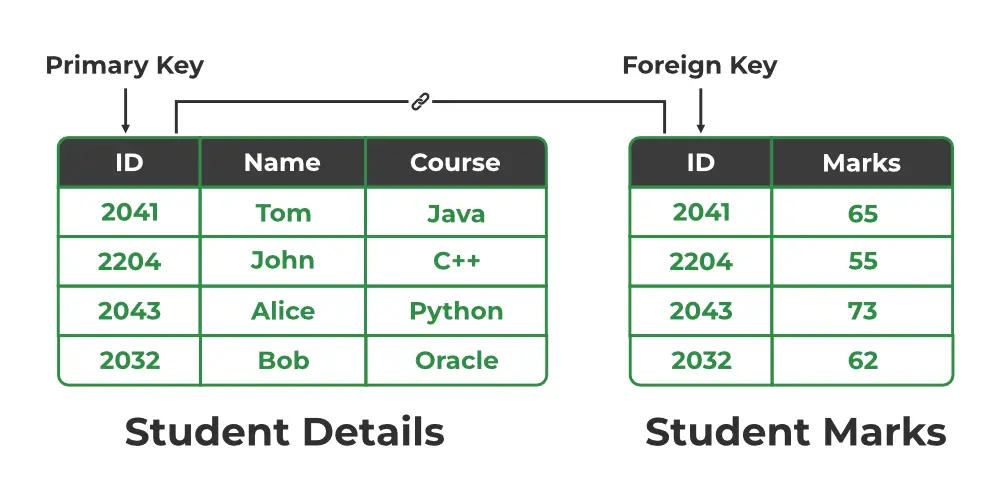
A foreign key constraint establishes a relationship between entities by linking the primary key of one entity to the foreign key of another entity.
It enforces referential integrity and maintains consistency between related entities.
Unique Constraint
A unique constraint ensures that the values in an entity attribute or a combination of attributes are unique within a table. It allows for the insertion of null values but prohibits duplicate values.
Check Constraint
A check constraint validates the values of an entity attribute against a specific condition or expression. It ensures that only valid data is inserted or updated in the attribute.
And that concludes our comprehensive glossary on the topic of Entity in SQL. By understanding these concepts, you will be better equipped to design and manage databases effectively.
TL;DR
Entities are fundamental building blocks in SQL databases, representing distinct objects or concepts.
Understanding entities is essential for effective data modeling, organization, and retrieval. By defining relationships between entities, we can capture the interconnectedness of real-world entities and establish meaningful associations.
Entities possess unique characteristics, including their uniqueness, attributes, and identity defined by primary keys. Different types of entities, such as strong, weak, and associative entities, allow us to model diverse scenarios accurately.
Entity relationships play a vital role in establishing connections between entities. One-to-one, one-to-many, and many-to-many relationships capture the varying degrees of associations between entities.
Frequently Asked Questions (FAQs)
What is an entity?
An entity is a distinct object, concept, or unit in a system or domain, often represented in databases, knowledge graphs, or information systems.
What are some examples of entities?
Entities can include people, organizations, products, events, or any other identifiable item or concept within a specific context.
How are entities used in databases?
In databases, entities are represented as tables, with each row representing an instance of the entity and columns representing its attributes.
What is entity extraction?
Entity extraction is the process of identifying and extracting entities from unstructured text, often used in natural language processing and information retrieval.
How do entities relate to relationships?
Entities often interact with other entities, forming relationships that describe connections, dependencies, or associations between them.
